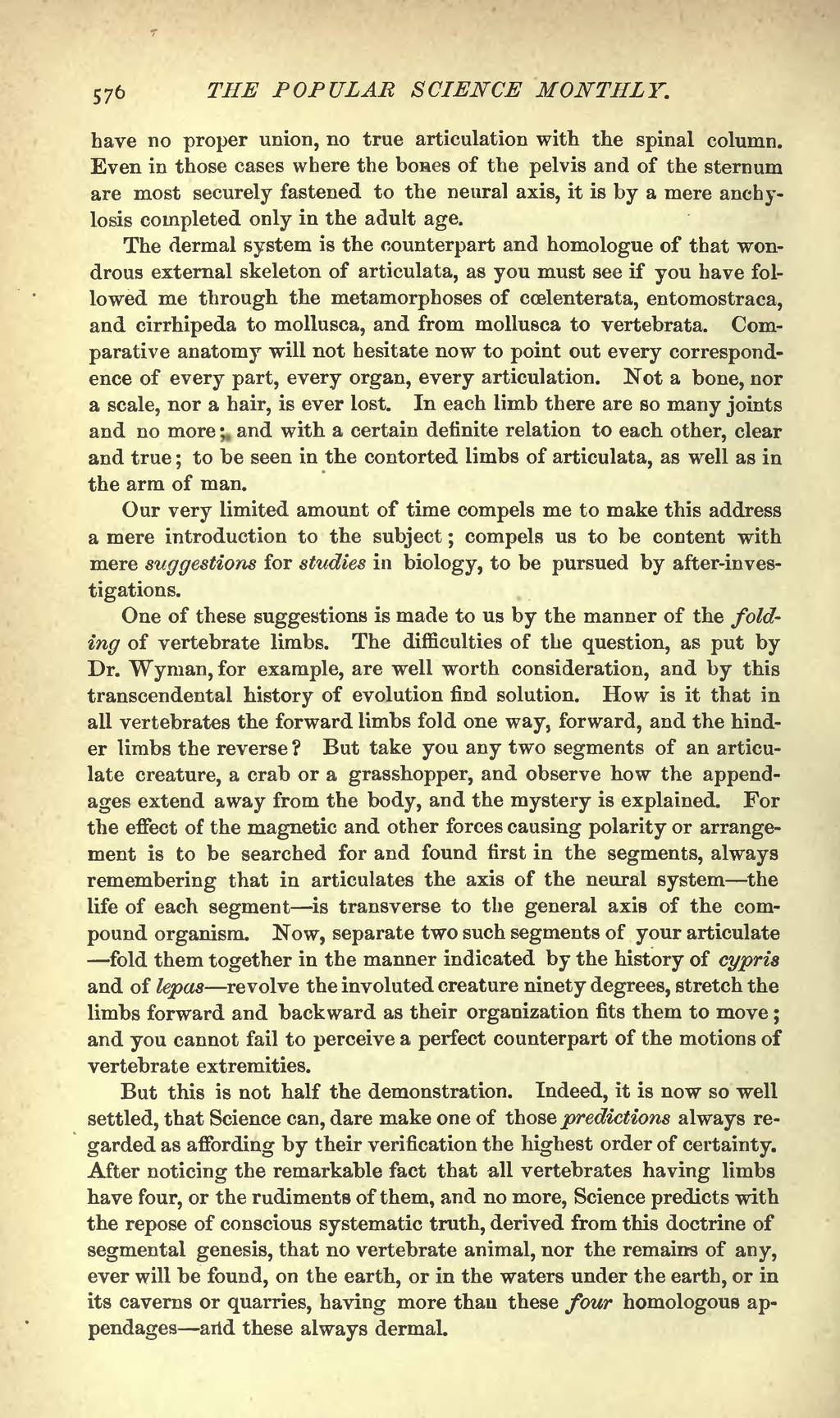have no proper union, no true articulation with the spinal column. Even in those cases where the bones of the pelvis and of the sternum are most securely fastened to the neural axis, it is by a mere anchylosis completed only in the adult age.
The dermal system is the counterpart and homologue of that wondrous external skeleton of articulata, as you must see if you have followed me through the metamorphoses of cœlenterata, entomostraca, and cirrhipeda to mollusca, and from mollusca to vertebrata. Comparative anatomy will not hesitate now to point out every correspondence of every part, every organ, every articulation. Not a bone, nor a scale, nor a hair, is ever lost. In each limb there are so many joints and no more; and with a certain definite relation to each other, clear and true; to be seen in the contorted limbs of articulata, as well as in the arm of man.
Our very limited amount of time compels me to make this address a mere introduction to the subject; compels us to be content with mere suggestions for studies in biology, to be pursued by after-investigations.
One of these suggestions is made to us by the manner of the folding of vertebrate limbs. The difficulties of the question, as put by Dr. Wyman, for example, are well worth consideration, and by this transcendental history of evolution find solution. How is it that in all vertebrates the forward limbs fold one way, forward, and the hinder limbs the reverse? But take you any two segments of an articulate creature, a crab or a grasshopper, and observe how the appendages extend away from the body, and the mystery is explained. For the effect of the magnetic and other forces causing polarity or arrangement is to be searched for and found first in the segments, always remembering that in articulates the axis of the neural system—the life of each segment—is transverse to the general axis of the compound organism. Now, separate two such segments of your articulate—fold them together in the manner indicated by the history of cypris and of lepas—revolve the involuted creature ninety degrees, stretch the limbs forward and backward as their organization fits them to move; and you cannot fail to perceive a perfect counterpart of the motions of vertebrate extremities.
But this is not half the demonstration. Indeed, it is now so well settled, that Science can, dare make one of those predictions always regarded as affording by their verification the highest order of certainty. After noticing the remarkable fact that all vertebrates having limbs have four, or the rudiments of them, and no more. Science predicts with the repose of conscious systematic truth, derived from this doctrine of segmental genesis, that no vertebrate animal, nor the remains of any, ever will be found, on the earth, or in the waters under the earth, or in its caverns or quarries, having more than these four homologous appendages—and these always dermal.

